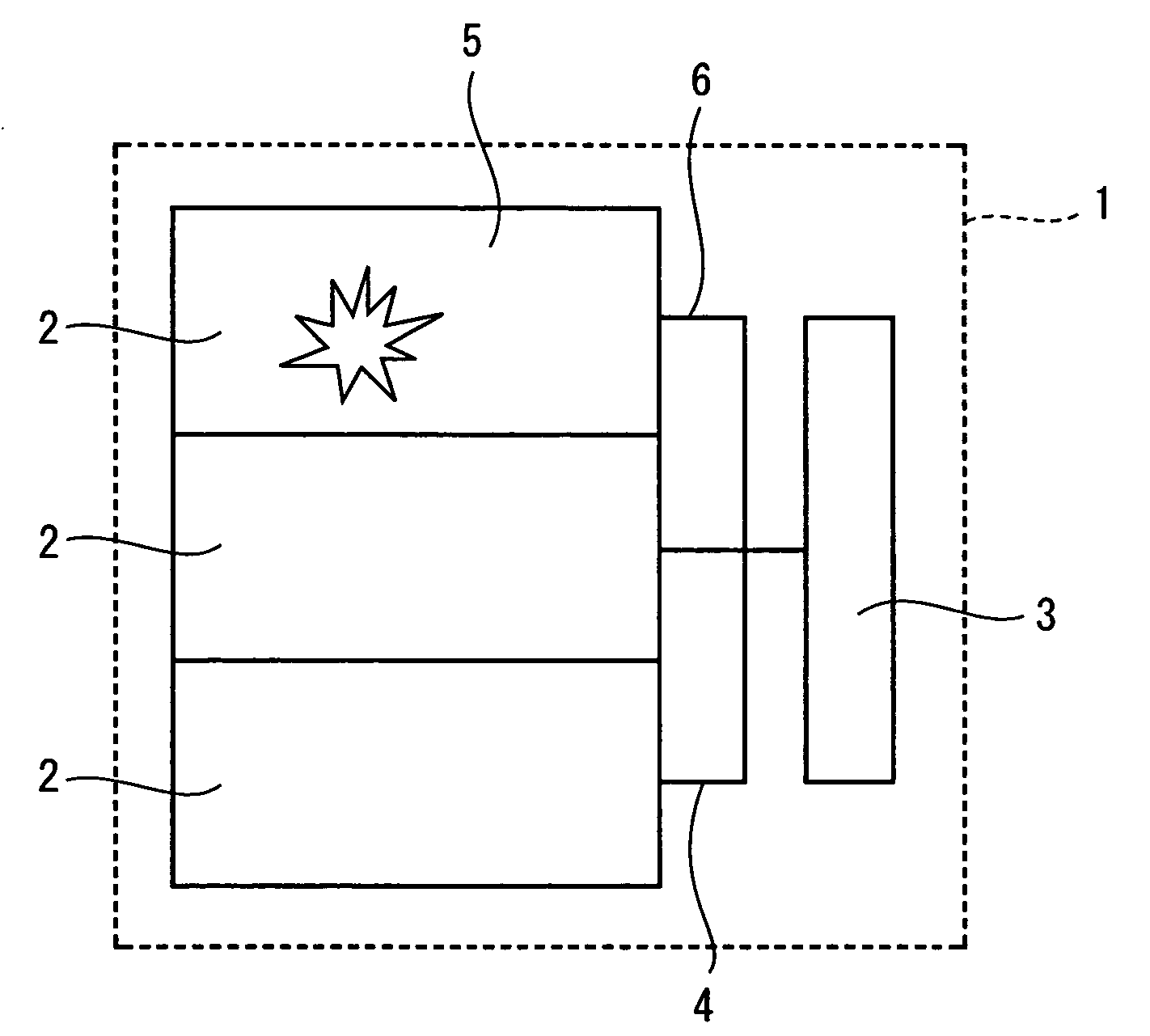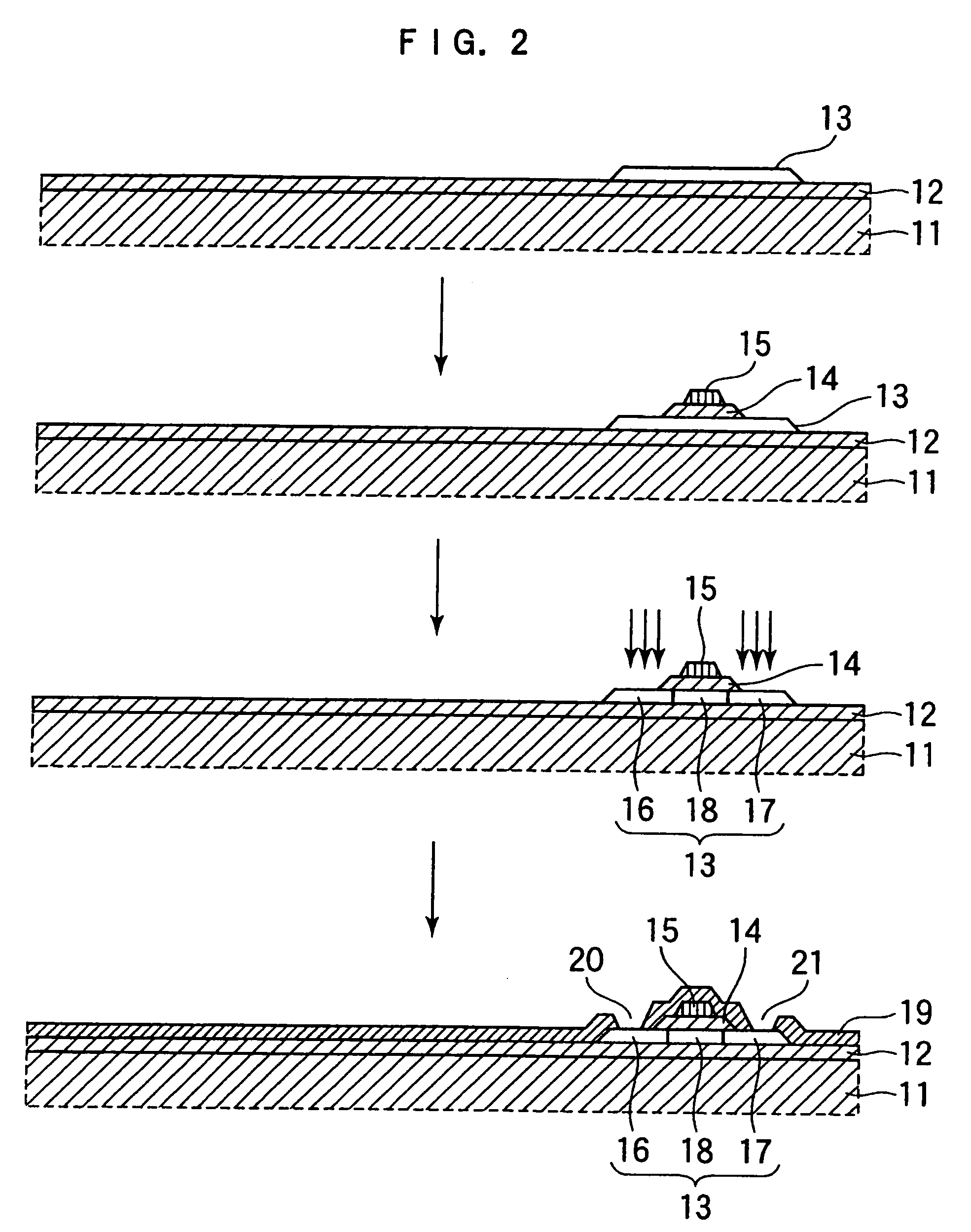Organic electroluminescent display device
a technology of electroluminescent display and organic materials, which is applied in the direction of organic semiconductor devices, semiconductor devices, electric discharge tubes, etc., can solve the problems of reducing image quality, reducing picture quality, and reducing image quality such as blurred outline, depending on the effect of the pixel d
- Summary
- Abstract
- Description
- Claims
- Application Information
AI Technical Summary
Benefits of technology
Problems solved by technology
Method used
Image
Examples
example 1
[0054] A bottom emission organic EL display device according Example 1 of the invention is described below with reference to FIGS. 2 to 5.
[0055] After a buffer layer 12 comprising a SiO2 film is first formed on an insulating substrate 11 comprising a glass substrate by a CVD method, a polycrystalline silicon layer is deposited by a CVD method, and then an island polycrystalline silicon layer 13 is formed by a conventional photo-etching process.
[0056] After a SiO2 film is deposited over the entire surface by a CVD method, an AlNd film is deposited by sputtering, and then the SiO2 film and the AlNd film are patterned by a conventional photo-etching process to form a gate insulating film 14 and a gate electrode 15.
[0057] Using the gate electrode 15 as a mask, phosphorus ions are implanted, for example, by ion implantation to form source and drain areas 16 and 17 in the island polycrystalline silicon layer 13 on both sides of the gate electrode 15 and to make the remaining portion a ...
example 2
[0073] A bottom emission organic EL display device according to Example 2 of the invention is described with reference to FIGS. 6 and 7. Plan views only are provided, since the element structure itself is the same as a conventional structure.
[0074]FIG. 6 is a plan view schematically showing the main part of one sub-pixel according to Example 2 of the invention, in which one conventional sub-pixel structure is segmented into three segmented pixel parts 51 to 53, which are each connected to the same gate line 41, data line 42, and power supply line 43 through segmented pixel circuits 54 to 56 each containing an independent TFT.
[0075]FIG. 7 is an illustration of how to repair when any pixel defect is found. When a pixel defect is found by a lighting test in the same manner as Example 1, all or any of the connections to the gate line 41, the data line 42 and the power supply line 43 is cut by laser fusion cutting such that the TFT of the pixel circuit 55 connected to the segmented pix...
example 3
[0079] A top emission organic EL display device according Example 3 of the invention is described with reference to FIGS. 8 to 10.
[0080] Referring to FIG. 8, a TFT is first formed on an insulating substrate 11 through a buffer layer 12 in the same manner as Example 1. After an interlayer insulating layer19 comprising a SiN film is deposited over the entire surface, contact holes are formed so as to reach source and drain areas 16 and 17, respectively, using a conventional photo-etching process.
[0081] Thereafter, an electrically conductive layer of an Al / Ti / Al multilayer structure is deposited over the entire surface and then patterned by a conventional photo-etching process to form a source electrode 61 also extending onto the TFT part and to form a drain electrode 25.
[0082] As shown in the plan view in the second row, the source electrode 61 is composed of a common source line 62 and four branch lines 63 branched from the line 62. For ease of illustration of the structure of the...
PUM
 Login to View More
Login to View More Abstract
Description
Claims
Application Information
 Login to View More
Login to View More - R&D
- Intellectual Property
- Life Sciences
- Materials
- Tech Scout
- Unparalleled Data Quality
- Higher Quality Content
- 60% Fewer Hallucinations
Browse by: Latest US Patents, China's latest patents, Technical Efficacy Thesaurus, Application Domain, Technology Topic, Popular Technical Reports.
© 2025 PatSnap. All rights reserved.Legal|Privacy policy|Modern Slavery Act Transparency Statement|Sitemap|About US| Contact US: help@patsnap.com



